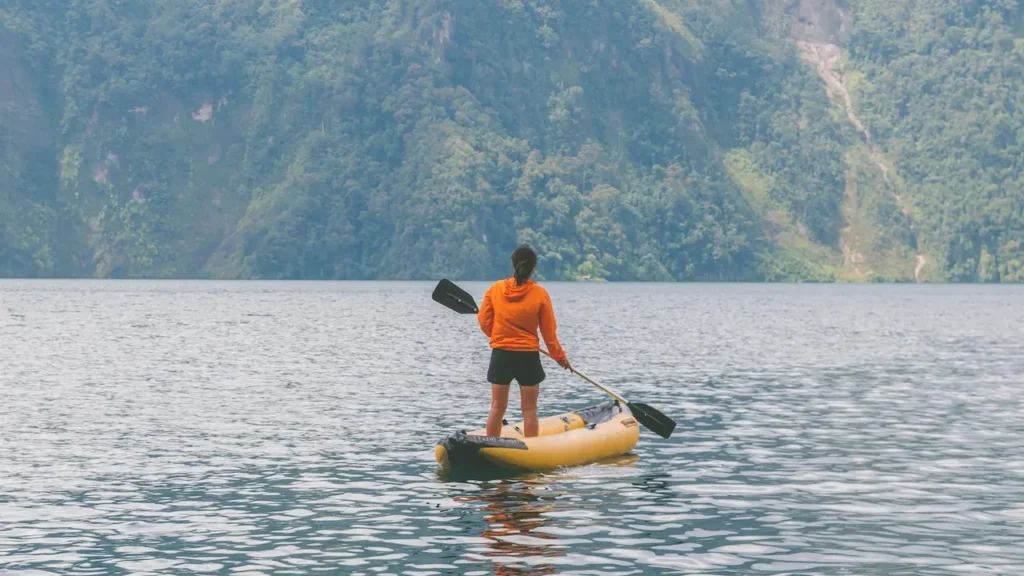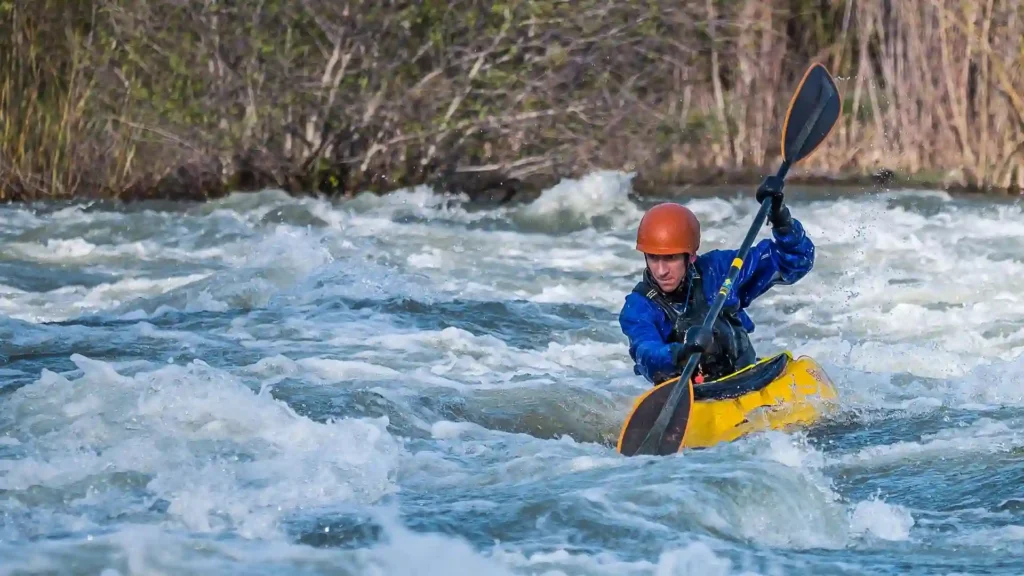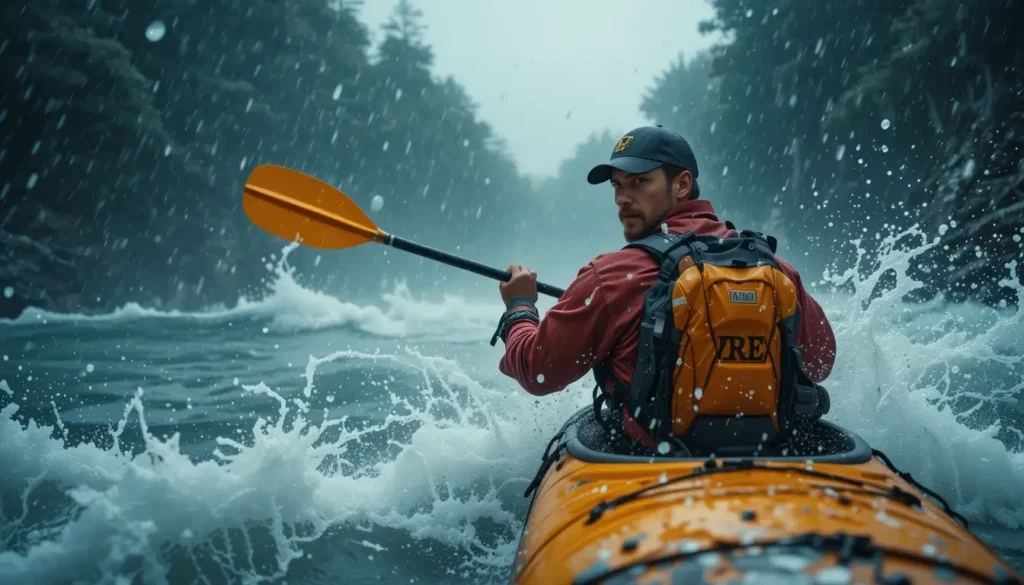Out on the water, it feels perfect. The air is clean. The waves are soft. The world goes quiet. You glide across the surface and feel free. But what if this peaceful moment is hiding a problem?
Many kayakers don’t realize the damage they leave behind. It’s not on purpose. It’s just easy to miss. But animals get scared, plants get crushed, and trash gets left behind. And the same waters we love start to fade.
Kayaking feels harmless because it has no engine. No noise. No smoke. But without the right habits, it’s not harmless at all. It can hurt nature in ways we don’t always see.
This article shows how to paddle without harming the places you enjoy. You’ll learn what to bring, how to behave, and what to fix after your trip. Each part gives you real steps to keep nature safe.
The tips here are easy to follow. But most people skip them. Not because they don’t care—but because no one showed them how. That changes now.
Respect the Water, Respect the Wildlife
Your trip starts before your kayak hits the water. Every choice matters. Where you go. What time. How you act. These things protect nature or put it at risk.
Avoid paddling in protected zones. Some areas are homes to nesting birds, fish, and turtles. One wrong move can destroy a season of new life.
Keep a safe distance from wildlife. Don’t try to get closer for a photo. If an animal changes behavior, you’re too close. Move away slowly. Let them feel safe again.
Stay quiet. No shouting, no music, no splashing around for fun. Sounds scare animals. They leave feeding spots or their young behind to get away from you.
Never feed animals. It makes them sick and changes how they act. They may stop hunting for food. Some become aggressive. Others starve when people stop feeding them.
Choose your launch point wisely. Use areas meant for boats. Don’t crush plants or dig into riverbanks to make your own path. If you can’t find a clear entry, use rock or sand—not mud or grass.
Watch where you step. Fragile plants and animal nests live on the edges of rivers and lakes. A few careless steps can ruin something that took years to grow.
Leave No Trace—Not Even a Ripple
The goal is to leave nothing behind—not trash, not noise, not damage. It’s a simple rule, but it takes effort. Here’s how to do it right.
Bring reusable items. Water bottles, food containers, dry bags. Avoid plastic wrappers, snack bags, and disposable water bottles. They blow away and pollute the water.
Secure everything. Wind or waves can knock your gear into the water. Use bungee cords, net bags, or hatch covers to lock it all down.
If you see trash in the water, grab it. Bring a small bag just for that. Be the paddler who leaves places cleaner than they found them.
Don’t throw anything into the water. Not food scraps, not tissues, not biodegradable items. “Natural” waste still harms water life.
Take care of your human waste too. Don’t go near the water. Use a restroom before your trip. For longer outings, bring a portable toilet or waste bag system.
Watch out for sunscreen and bug spray. Many have chemicals that poison fish and insects. Choose reef-safe products. Put them on before you paddle so they don’t wash off in the water.
Don’t make noise. Enjoy the silence. Loud sounds hurt animal routines and spoil the experience for others. Keep your voice low and your music off.
Clean, Drain, Dry—Every Time
This is where most people fail. They pack up, go home, and never think twice. But their gear may be carrying invisible threats to the next lake.
Invasive species travel by water. They stick to your kayak, your paddle, your life vest. They hide in small puddles in your boat or under your seat.
After every trip, rinse your kayak with fresh water. Don’t use lake or river water. That just spreads the problem. Use a sponge or brush to remove mud and plants.
Drain all water. Tip your kayak to let every drop out. Open hatches and storage areas. Get rid of every puddle. Water can carry tiny eggs or larvae.
Let your gear dry for two full days. This includes paddles, life jackets, water shoes, ropes, and anything else that got wet. Invasive species die when dry.
Don’t move between water bodies too quickly. If you paddle today in one lake and tomorrow in another, you may carry problems from one to the next.
Some places now require inspection. Don’t be annoyed. These rules protect the places you love. Follow them. They matter.
Be extra careful when switching between saltwater and freshwater. Some invaders survive both. Don’t assume you’re safe just because the water looks clean.
Paddle Light, Tread Light
It’s not just the water you affect. It’s the land too. How you get to the water and what you do on shore matters just as much.
Use trails that already exist. Don’t make new ones. New trails turn into wide paths. They invite more people and more damage.
When carrying your kayak, pick it up. Don’t drag it through brush or tall grass. That crushes plants and digs holes.
Don’t camp just anywhere. Use official sites. These places are built to handle people. Random campsites ruin untouched land.
Skip the campfire when possible. Fires leave scars. Use a camp stove instead. If you must make a fire, use a fire ring, and clean up everything after.
Don’t build anything. No rock towers, no stick shelters, no decorations. These may look fun but damage insect homes and disturb animals.
Avoid paddling in very shallow water. You might crush fish nests or stir up mud. That mud covers plants and hurts animals that need clear water to breathe.
Group paddles are fun. But they make a bigger impact. Make sure your group knows the rules. Don’t be the group that causes damage.
Be an Advocate, Not Just a Visitor
You’re not just a guest on the water. You’re part of the community now. And that means more than following the rules. It means leading by example.
Help others learn. Most people don’t break the rules on purpose. They just don’t know better. Share what you know. Do it kindly.
If you see someone harming wildlife, talk to them. Be respectful. Help them understand. You can change minds more with kindness than anger.
Support the people protecting our waterways. Volunteer for clean-up events. Join or donate to conservation groups. Your time and money go a long way.
Report what you see. If you spot pollution, illegal dumping, or habitat destruction, don’t ignore it. Contact the right group or agency. Say something.
Teach young paddlers the right way. Bring kids, show them the ropes. They learn fast. If they grow up with these habits, they’ll keep the water safe long after we’re gone.
Every voice counts. One person picking up trash, cleaning gear, and respecting animals can inspire many more. Change spreads fast—when someone starts it.
You don’t need to be perfect. You just need to care. One step better every time. That’s what the water needs.
Now you know the truth. Kayaking can help nature—or hurt it. The choice is yours. And every trip is another chance to make the right one.
Eco-friendly kayaking doesn’t require much. No fancy gear. No big money. Just smart habits, quiet respect, and a bit of effort.
You don’t have to give up fun to protect nature. In fact, your fun lasts longer when you help keep the places you love healthy.
Each paddle stroke is a chance. A chance to do less harm. A chance to set a better example. A chance to leave the water cleaner than you found it.
Next time you launch, ask yourself: “Am I helping or hurting this place?” If you’re helping, you’re on the right path. If not, change one habit. Then another.
That’s how real impact happens. Quietly. Trip by trip. Choice by choice. Person by person.
And it starts with you. Today.




